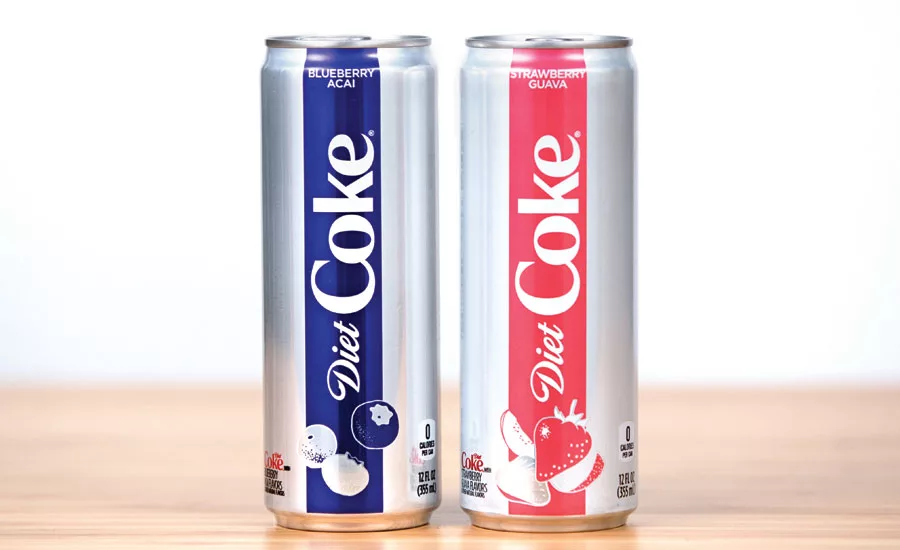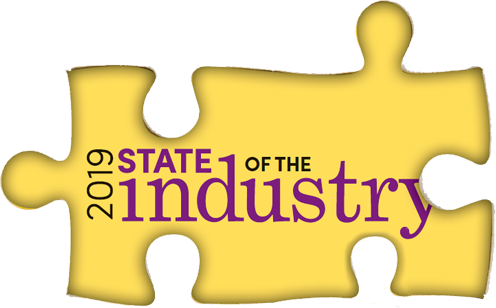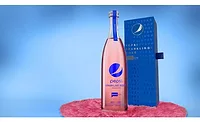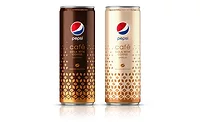2019 State of the Beverage Industry: Carbonated soft drinks benefit from flavor, diet segments
Sensory experiences could offer potential to CSD market

As consumers’ beverage choices have shifted, the carbonated soft drinks (CSD) market has taken one of the largest hits. For example, the compound annual growth rate (CAGR) for the U.S. CSD market declined 1.6 percent in the 2012-2017 timeframe, according to data in New York-based Beverage Marketing Corporation’s (BMC) report titled “Carbonated Soft Drinks in the U.S. through 2022.” The 2001-2006 timeframe was the last time the category’s CAGR was not in decline, at which point it was flat, BMC’s report states.
Despite performance challenges, forecasts suggest a deceleration of the contraction. BMC forecasts that for the 2017-2022 time period, the CSD market’s CAGR will be down 0.4 percent. Although CSDs are expected to still be in decline, this could be a sign of market improvements.
“Demand for carbonated soft drinks remains soft but performance improved modestly in 2018 thanks in particular to improved performance in the diet segment,” said Gary Hemphill, managing director of research for BMC, in Beverage Industry’s April issue.
Caleb Bryant, senior beverage analyst for Chicago-based Mintel, also detailed some of the recent gains the CSD market has experienced.
“While we do not have recent volume consumption data, 2018 was a significant year for CSD brands; total CSD sales increased 2.2 percent,” Bryant said. “This overall growth was driven by a strong increase in Diet Coke sales stemming from the launch of new Diet Coke flavors in skinny cans. Diet Pepsi also experienced sales growth possibly due to PepsiCo bringing back the original Diet Pepsi formula with aspartame.
“Sales of most full-calorie CSDs also increased in the past year with Fanta, Dr Pepper and Canada Dry being brands with notable growth,” he continued.
| BRANDS | 2012 | 2013 | 2014 | 2015 | 2016 | 2017 |
| Coca-Cola | 17.6% | 18.1% | 18.4% | 18.5% | 18.5% | 18.6% |
| Pepsi Cola | 9.7% | 9.7% | 9.6% | 9.5% | 9.3% | 9.1% |
| Diet Coke | 9.9% | 9.5% | 8.9% | 8.6% | 8.3% | 8.0% |
| Dr Pepper | 6.7% | 6.9% | 7.0% | 7.2% | 7.3% | 7.5% |
| Sprite | 5.9% | 6.1% | 6.2% | 6.5% | 6.8% | 7.2% |
| Mountain Dew | 7.2% | 7.3% | 7.2% | 7.2% | 7.2% | 7.0% |
| Diet Pepsi | 4.7% | 4.5% | 4.3% | 4.1% | 3.8% | 3.5% |
| Coke Zero | 2.5% | 2.6% | 2.5% | 2.6% | 2.6% | 2.8% |
| Fanta | 1.9% | 1.8% | 2.0% | 2.1% | 2.3% | 2.4% |
| Diet Mountain Dew | 2.1% | 2.1% | 2.1% | 2.1% | 2.1% | 2.1% |
Source: Beverage Marketing Corporation
Even though the cola market still is in decline, Alexander Esposito, research analyst at Chicago-based Euromonitor International, highlighted the performance of the diet and flavor segments.
“In 2018, regular cola carbonates, excluding caffeine-free and diet versions, continued its decline similar to previous years,” he said. “Various categories within non-cola carbonates, however, showed surprising developments. Coca-Cola has seen success with its revamped Diet Coke line which turns around new, inventive flavor formulations. We have also seen non-cola categories do well. Lemon-lime sodas in particular are doing well despite sugar concerns that are dragging down other categories.”
One macro trend that has impacted the CSD market for roughly the past two decades has been health and wellness, experts say.
“Consumer demand for healthier refreshment has negatively impacted the carbonated soft drink category,” BMC’s Hemphill said. “Thirsty consumers still like soda, but increasingly they have been reaching for healthier options like bottled water.”
Mintel’s Bryant echoed similar sentiments, but noted that the CSD market still maintains a core base.
“Consumer interest in health and wellness negatively impacts the CSD market,” he said. “Consumers are reducing their CSD consumption frequency or dropping out of the market entirely due to health concerns surrounding CSDs. Sixty-one percent of non-CSD consumers say they don’t drink CSDs because CSDs are too high in sugar.
“Despite interest in health, historical CSD sales are largely flat/in slight decline rather than in a tailspin suggesting a core base of consumers who aren’t reducing their CSD consumption,” he continued. “Twenty percent of heavy CSD drinkers (i.e., consumers who drink CSDs multiple times per week or more often) say they aren’t concerned with the healthfulness of CSDs.”
In addition to concerns regarding sugar content, mistrust of artificial sweeteners has impacted the category, Euromonitor’s Esposito said. Although health-and-wellness trends seem to have an overall negative impact on CSDs, he notes that niche segments have weathered the storm.
“Subcategories with fruit flavors and products that work well as mixers have been able to eke out growth despite these trends,” Esposito said.
Although healthy refreshment will continue to loom over the CSD market, soft drinks still have an opportunity to take advantage of the non-alcohol trend in the overall beverage market.
“Falling alcohol consumption suggests an opportunity for CSDs to position themselves as an alcoholic beverage alternative,” Mintel’s Bryant said. BI
Looking for a reprint of this article?
From high-res PDFs to custom plaques, order your copy today!






